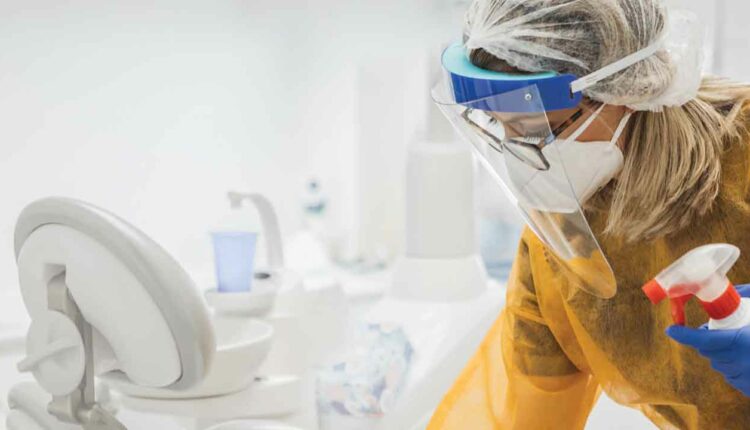
North Carolina Dental Hygienists Spearhead Oral Health Initiative
A team of 21 frontline public dental hygienists working to address oral health inequalities across North Carolina has been instrumental in creating and implementing a state-wide plan that addresses the needs of their most vulnerable patients.
A team of 21 frontline public dental hygienists working to address oral health inequalities across North Carolina has been instrumental in creating and implementing a state-wide plan that addresses the needs of their most vulnerable patients.
While working in the North Carolina Department of Health and Human Services Division of Public Health’s Oral Health Section (OHS), these public health dental hygienists facilitated Regional Oral Health Alliance (ROHA) meetings. The meetings were attended by various oral health stakeholders, safety net dental providers, oral health advocates, dental providers, and members of North Carolina’s 10 ROHAs. Together they collaborated and mapped out shared goals in an effort to improve the oral health of the state’s residents. More than 150 people participated in writing the plan — representing more than 200 internal and external organizations.
“The OHS public health dental hygienists led the charge in creating the North Carolina Oral Health Improvement Plan by facilitating the alliance meetings, ensuring their membership were aware of the status of oral health drivers in their region, and offering evidenced-based solutions,” says Sarah Tomlinson, DDS, RDH, state dental director and OHS chief.
The North Carolina Oral Health Improvement Plan 2020–2025 is the culmination of years of work that began in 2015. The plan, designed to remove barriers to care for North Carolina’s vulnerable residents is composed of 10 Regional Oral Health Improvement Plans built on evidence-based strategies for improved oral health outcomes. At least two dental hygienists are assigned to each of the state’s 10 regions. The roadmap is based on four action areas: social determinants of health, evidence-based programs, collaborative practice models, and health literacy.
“Improving oral health and reducing oral health disparities requires a multifaceted approach. One must consider dental needs as well as the impacts from social determinants of health and environmental factors — including habits, behaviors, knowledge base and community resources,” she says. “Our state plan emphasizes not only prevention strategies that can be implemented in community settings, but also clinical preventive services delivered through collaborative practice models.”
Barriers to meeting oral health goals are also identified by region in the document. To determine areas of success and those that require more work, OHS created Regional Oral Health Snapshots, a data visualization tool offering metrics to show how the public is responding to the program. While not a perfect tracking system (healthy habits and activities surrounding health literacy are not tracked), the system provides metrics for the regional snapshots. These include kindergarteners with dental needs, populations supported by community water fluoridation, children receiving dental services in their medical home, and tobacco use.
Tomlinson says that by implementing the evidenced-based activities outlined in the oral health improvement plan, better oral health should be reflected in future data. “In time, as the data points in the Regional Oral Health Snapshots are updated, our plan’s impacts will be revealed,” she adds.
This is not the first time that the OHS public health dental hygienists have worked to address inequities in oral health. When the state identified the frail-elderly as a population with special oral health needs in its 2014 oral health improvement plan, the dental hygienists got to work in filling that need. The healthcare professionals work with residential facilities to educate staff on the connection between oral health and overall health. They partner with residential facilities, to provide training on implementing daily oral hygiene programs and supporting residents who can no longer brush their own teeth.
As the state reopens from the COVID-19 pandemic restrictions, North Carolina’s OHS public health dental hygienists are assessing how the pandemic has impacted oral health in their communities and will be collaborating with partners and stakeholders in addressing the need.

